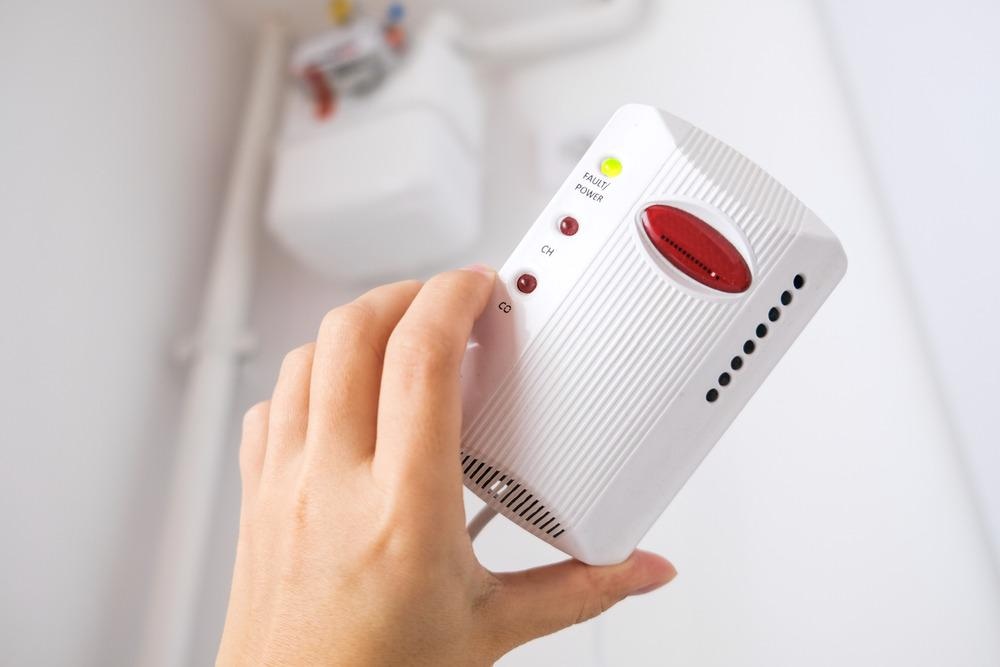Breakthrough research from the journal Nano-structures and Nano-objects has developed composite nanoparticles with WO3 crystallite dimensions of 13–17 nm using a modified sol–gel technique.

Study: WO3–graphene–Cu nanocomposites for CO, NO2 and acetone gas sensors. Image Credit: juliet_dreamhunter/Shutterstock.com
The produced nanomaterials were found to have an improved sensing sensitivity to CO, NO2, and acetone.
Having Good Quality Indoor Air
Controlling the quality of indoor air and detecting toxic gases as well as volatile organic compounds are essential priorities for improving workplace and home environments. This necessitates the development of specific gas sensors materials with higher sensing abilities.
Toxic, harmful gases and volatile organic compounds are risky particulate pollution that harms many living things and ecosystems. These gases diverge in their chemical composition, electrical characteristics, and secure concentration limits, and they are frequently found in gas mixtures. As a result, sensor components that can detect various types of gases in a wide range of concentrations and have distinguishable patterns for their electrical parameters that vary based on the atmosphere are in short supply for a wide range of industrial, agricultural, and scientific purposes.
Conventional Sensor Devices Technology
Metal oxides such as SnO2, In2O3, and ZnO are some of the most commonly used materials in the sensor devices of semiconductor sensing applications for efficiently identifying gases of various chemical natures. Merging different n-type and p-type semiconductor materials in a tightly interconnected crystalline form could improve gas selectivity and sensitivity of semiconductor oxides.
Some other promising and efficient approach for improving sensor qualities is the use of various electro - active additives (3d-metals, nanotubes, and others) for oxide framework and surface functionalization. Modification by 2D structural materials, such as graphene and MXenes, has also received special research interest.
Nanospheres WO3 as a New Biosensor
The establishment of the covalent bond among graphene and WO3 nanospheres is crucial for efficient charge transfer. Therefore in a particular circumstance, the chemical bonds act as electron bridges, improving the sensor performance of the graphene–WO3 sensor. Furthermore, graphene's outstanding conductivity may improve responses because graphene provides conductive pathways that improve the efficiency of charge transport in composites.
Merging metal oxide and rGO with high conductivity metallic nanoparticles could result in even greater synergy. It has been reported that metallic nanoparticles incorporated into the G matrix enhance the catalytic effect for the creation of oxygen anions on the surface of electrochemical sensors.
The sol–gel technique used for this study's sample synthesis was initially used successfully to produce high-quality nanopowders with a fine micro - structural, including WO3. The method allows for precise regulation of the crystalline sizes, elemental composition, and homogeneity of the nanomaterials.
Throughout this case, it is fascinating to see how the G@Cu powder, which was packed into a tungsten-based gel first before WO3 crystallinity was fully developed, influences the structure and morphology of the WO3 crystalline phase, as well as the complex interaction between the oxide and the graphene–copper nanotubes.
Result of The Research
According to the XRD patterns, many of the powders have a fine crystalline structure with calculated average crystalline sizes ranging from 11 to 17 nm, with a visible tendency for the size to decline with greater G@Cu powder load. As a whole, the size values are characteristic for materials obtained through the sol–gel method and comply with our previous findings. Assessment of the specimen TEM images, on the other hand, reveals that the composition powder particles are accumulations of small flat plate-like crystalline — monoclinic tungsten oxide.
The results suggested that the surface area of the material may influence their detection sensitivity.
Further Research
Researchers analyzed the transformation in particular gas sensors response (i.e. the influence of the substances surface area is exempted) of materials with different modifier components to gain a better understanding of the impact of the materials' surface area on the gas sensing properties of the material.
The effect on the gas sensors response of subsamples of materials of the same type was found to be insignificant. Other factors, such as structure defects, free-electron intensity, and outer layer energy distribution, may play a more significant role in this case and will be discussed further.
Ultimately, the nanocomposites acquired are of great research concern and have the promise for future applications in extremely sensitive gas sensors for gases of various chemical natures. The proposed method of synthesis could also be used to create a wide range of nanomaterials and compositions with manageable phases and microstructures.
Continue reading: How are Nanocatalysts Used for Environmental Applications?
Reference
Haiduk, Y., et al. (2021). WO3–graphene–Cu nanocomposites for CO, NO2 and acetone gas sensors. Nano-structures and Nano-objects. Available at: https://www.sciencedirect.com/science/article/pii/S2352507X21000858?casa_token=3dNlpMr8F7gAAAAA:idItqRJ-hzuUveSUTC6t0_wk1DHC95aBwzn4tp27Npij9D2sEedBzEUXQDck4s3bRIfWbD0alA
Disclaimer: The views expressed here are those of the author expressed in their private capacity and do not necessarily represent the views of AZoM.com Limited T/A AZoNetwork the owner and operator of this website. This disclaimer forms part of the Terms and conditions of use of this website.